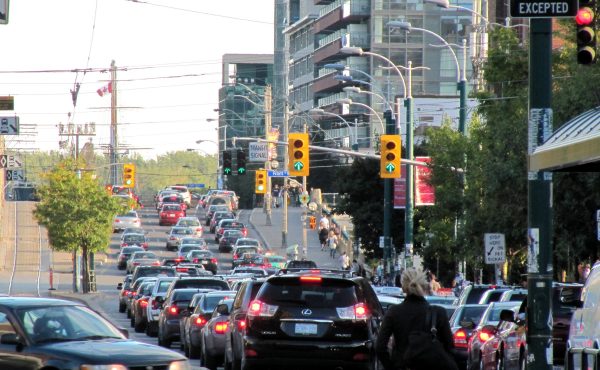He’d been spending his days hunched over papers in the Thomas Fisher Rare Book Library at U of T, hunting down information even he admitted was dull. The Fisher was his heart’s home—old teak cabinets full of file cards with the fading hand-writing of dead librarians, local history, broadsides carefully peeled off last century’s lampposts by some archivist type just like himself. Newpapers, maps, advertisements for land, everything filed away in crisping folders, laid back to front in Bankers Boxes. A room full of voices.
— from Consolation, by Michael Redhill, page 35
The Thomas Fisher Rare Book Library is a multidimensional map of the city: it contains documents from every locale in Toronto, but also every moment. As Michael Redhill’s Consolation flips back and forth between eras, the library is a kind of waystation. While the late twentieth-century character David Hollis spends all his time studying the Toronto archives at the Thomas Fisher Library, the mid nineteenth-century characters can only wonder if their city will ever be established enough to keep those archives. To them a city library is a futurist dream.
While Thomas Fisher himself also lived in the mid-nineteenth century, he wasn’t an archivist. He came to Canada in 1821, owned a mill on the Humber river, and was active in civic affairs. The library has his name because of his great-grandsons, who donated their rare books to the collection in 1973, the year the present building opened.
The head of the peacock shape of U of T’s Robarts Library, the Thomas Fisher itself feels like a subterranean cathedral. The small and large spines of the library’s 600,000 rare books glow in shades of auburn, gold, and brown in stacks that circle the walls up to the high ceiling. In addition to books, the library has 2,500 linear meters of manuscripts, including cuneiform tablets dating to 1789 BC, and a priceless thousand-year-old Byzantine manuscript of the gospels still its original binding, and named Codex Torontonensis for its new city. Dan Brown enthusiasts might faint at the opportunities for bookish melodrama in this place. The archive also has extensive holdings in Canadian literature, including the papers of Leonard Cohen, Margaret Atwood and Gwendolyn MacEwen. A bronze bust of MacEwen (the model for the one placed in Gwendolyn MacEwen Park in 2006) presides in the central section of the library, lending a physical presence to the voices that, as Redhill says, fill the archive.
Photo by Easternblot






4 comments
Photography is prohibited in the rare book library! (But I have taken a few myself.)
Do you have to be a U of T alumni to access the library?
In any case, I think libraries are such amazing places, especially old grand ones like U of T’s and other prestigious universities. I had an English teacher in high school who told us about how he has a thing for exploring libraries in every city he travels to. Not just for the books either but for the way they’re designed, the lighting, the heights, even the furniture. Library tour of Toronto… That would be so cool.
You definitely don’t need to be an alum to go to the Fisher: any one can enter and consult the materials. For real. Even the manuscripts.
I agree, a library tour of Toronto would be great, but it would pose some logistical difficulties since there are so many over such a wide area. A pedestrian library tour, even within a constrained area, could take on marathon proportions…
Photos are allowed in the Rare Book Library during Doors Open.
Some of the most striking library branches are in far flung parts of the city, e.g. Beaches, Eatonville, Malvern, and Long Branch. Even a bus tour would be a bit of a marathon, and would surely get strange looks from the locals. But a self-guided tour is a good excuse to see parts of the city you might not otherwise visit.